Updated December 16, 2023
A social media influencer contract is a legal document between an influencer who uses their platform to promote a client’s product or services.
Companies often pay influencers on a per-post basis or as a percentage (%) of goods sold.
Top Influencer Platforms (6)
- YouTube
- TikTok
- Snapchat
Table of Contents |
What Should be Included (4)
1. Content Requirements
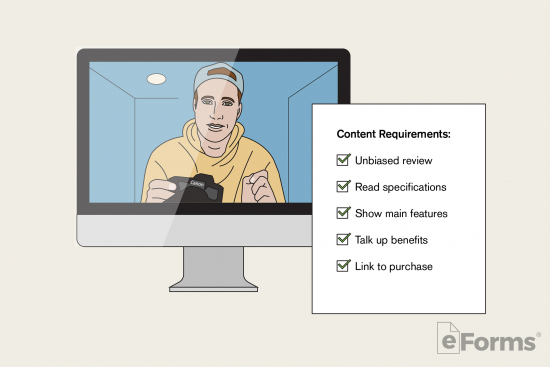 Give easy-to-understand requests of what products and services the influencer will publish on their social media profiles. It’s best to ask influencers to post content relevant to their following.
Give easy-to-understand requests of what products and services the influencer will publish on their social media profiles. It’s best to ask influencers to post content relevant to their following.
Example: If the influencer is a travel blogger, request to have content related to traveling (such as suitcases, travel websites, hotels, etc.).
3. Posting Frequency
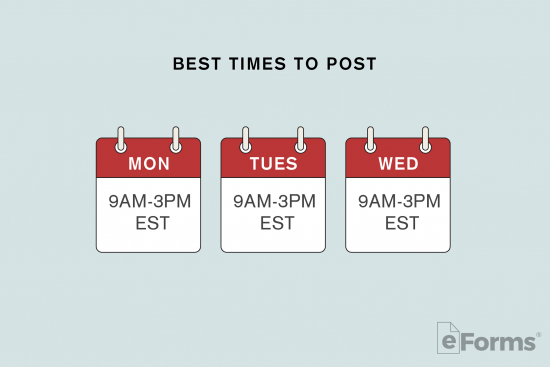 Requesting the influencer to post when their audience is online is crucial. This strategy allows the post to be at the top of their followers’ feeds and have the largest audience viewing their content.
Requesting the influencer to post when their audience is online is crucial. This strategy allows the post to be at the top of their followers’ feeds and have the largest audience viewing their content.
According to SproutSocial, the best times to post on the largest social media platforms are on Monday through Wednesday between 9am to 3pm EST.
4. Payment
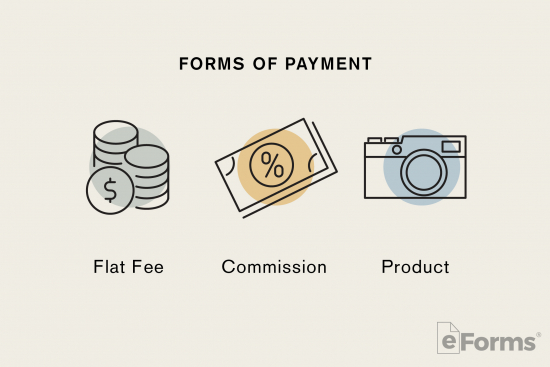 Most influencers collect payment on a per-post basis. Companies pay flat fees before the posting and usually commit to a pre-set number of posts on the influencer’s social media.
Most influencers collect payment on a per-post basis. Companies pay flat fees before the posting and usually commit to a pre-set number of posts on the influencer’s social media.
It is common for influencers to be paid by:
- Flat fee (per post);
- Commission (based on the sales generated and tracked); and
- Free products and services.
Are Followers Fake? (3 ways to find out)
2. Followers Don’t Have Profile Photos
3. HypeAuditor
Use HypeAuditor to determine if a social profile’s followers are real. The most critical factors are viewing the engagement ratio (minimum of 0.25%) and follower rate (there should be a slow increase over time unless the person goes viral).
For example, view Tom Brady’s profile:
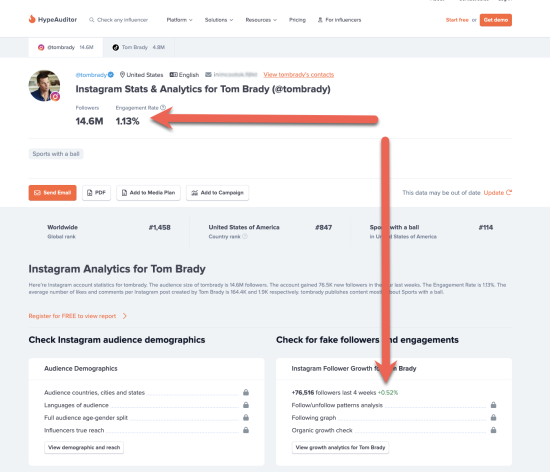
Sample
Download: PDF, MS Word, OpenDocument
SOCIAL MEDIA INFLUENCER CONTRACT
1. THE PARTIES. This Social Media Influencer Contract (“Contract”) made this [DATE], is by and between:
Advertiser: [ADVERTISER’S NAME] (“Advertiser”) and
Influencer: [INFLUENCER’S NAME] (“Influencer”).
The Advertiser and the Influencer are individually referred to herein as a “Party” and collectively as the “Parties.”
2. TERM. This Agreement starts on [START DATE], and continues for a(n): (check one)
☐ – Ongoing Term. The terms of the Contract remain in effect until either the Advertiser or the Influencer terminates the Contract, giving [#] days’ notice to the other Party (“At-Will”). After termination, the Parties shall have no obligations or liabilities to one another.
☐ – Fixed-Term. The Parties agree that this Contract shall terminate on [END DATE]. After termination, the Parties shall have no obligations or liabilities to one another.
3. SOCIAL MEDIA PLATFORMS. The Influencer agrees to promote the Advertiser on the following social media platforms: (check all that apply)
☐ – Instagram
☐ – YouTube
☐ – Twitter
☐ – TikTok
☐ – Facebook
☐ – Snapchat
☐ – Other. [DESCRIBE]
4. CONTENT. The Influencer shall promote the Advertiser’s products and services in the following manner: [PROMOTIONAL INSTRUCTIONS]
5. PAYMENT. The Advertiser shall pay the Influencer in the following manner: [PAYMENT INSTRUCTIONS]
Hereinafter known as the “Payment Amount.” The Influencer understands that they are being paid as an independent contractor and responsible for the payment of all appropriate local, state, and federal taxes.
6. PAYMENT INSTRUCTIONS. The Advertiser is required to pay the Payment Amount to the Influencer by: (check one)
☐ – Pre-Payment. The Influencer is to be pre-paid by the Advertiser prior to any content that is to be posted.
☐ – Payment Upon Receipt. The Influencer is to be paid no later than [#] days following the receipt of an invoice. (complete parts a & b below)
a.) Late Fees. For past-due invoices, the following late fee will apply if payment is late by more than [#] day(s): (check one)
☐ – Dollar Amount: $[AMOUNT]
☐ – Percentage of Invoice: [#]%
b.) Deposit. For the good-faith performance of this Contract, the Advertiser shall: (check one)
☐ – Be required to make a deposit in the amount of $[AMOUNT] to be paid at the commencement of the Contract (“Deposit”). The Deposit shall be non-refundable but applicable to the first Payment Amount.
☐ – Not be required to make a deposit as part of this Contract.
7. ADVERTISER APPROVAL. Prior to publishing, the Influencer is: (check one)
☐ – Required to obtain permission from the Advertiser.
☐ – Not Required to obtain permission from the Advertiser.
8. NOTICES. Notices shall be made to any of the following contact details:
Advertiser
Name: [NAME] Phone: [PHONE]
Address: [MAILING ADDRESS]
E-Mail: [E-MAIL ADDRESS]
Influencer
Name: [NAME] Phone: [PHONE]
Address: [MAILING ADDRESS]
E-Mail: [E-MAIL ADDRESS]
9. ADDITIONAL TERMS. [ADDITIONAL TERMS & CONDITIONS]
IN WITNESS WHEREOF, the Parties hereto have executed this Agreement as of the date first above written.
Advertiser’s Signature: ______________________ Date: __________
Print Name: ______________________
Influencer’s Signature: ______________________ Date: __________
Print Name: ______________________

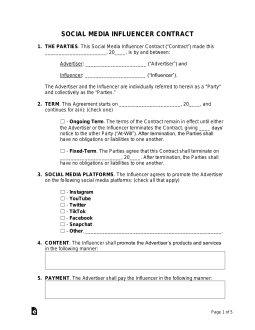
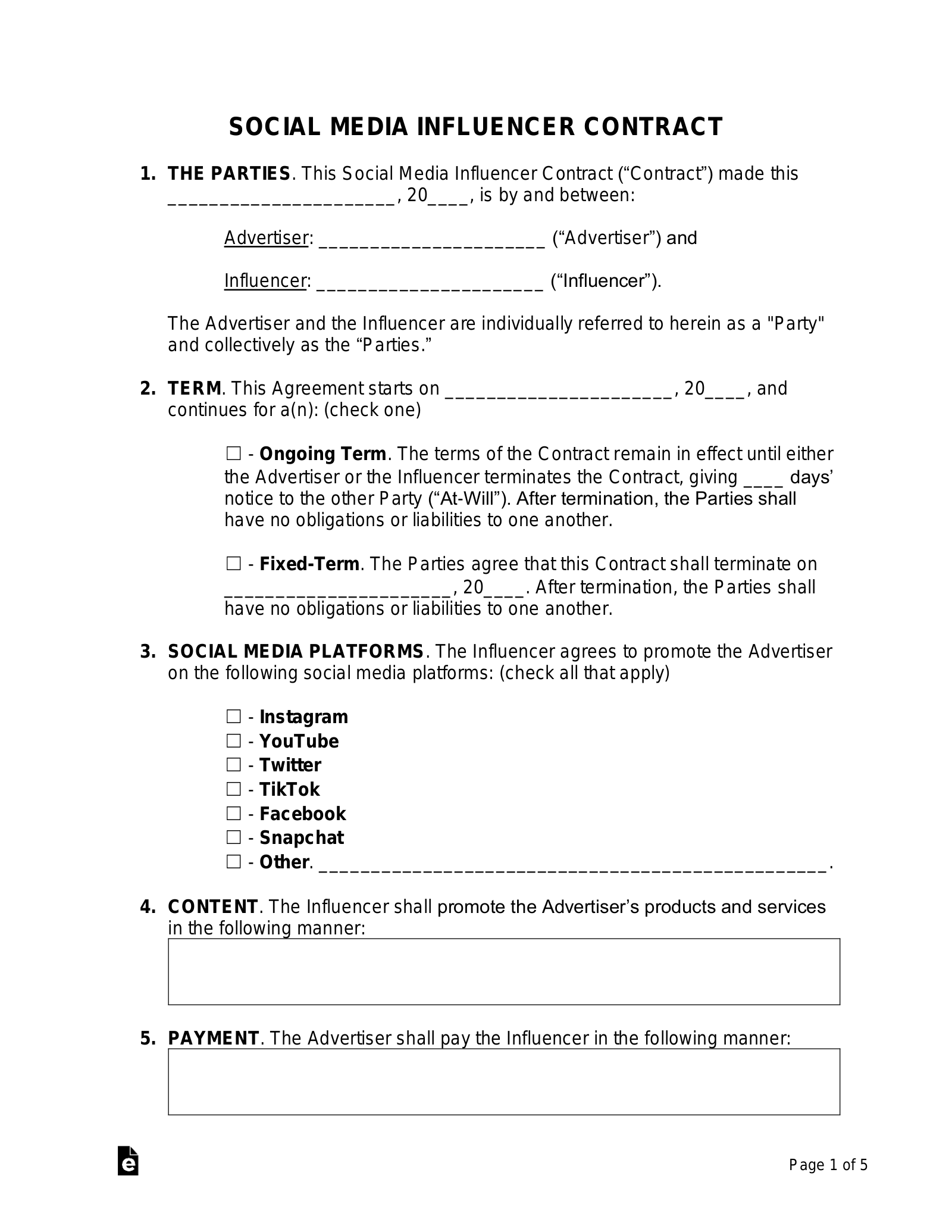
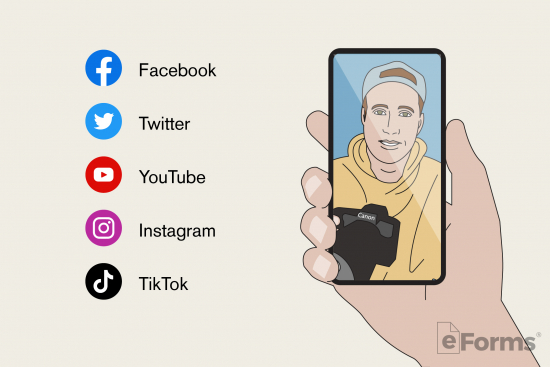 Most influencers have one platform with most of their followers. However, if they are prevalent on multiple platforms, advertisers must decide if they want to contract the influencer to publish content on specific or multiple platforms.
Most influencers have one platform with most of their followers. However, if they are prevalent on multiple platforms, advertisers must decide if they want to contract the influencer to publish content on specific or multiple platforms.